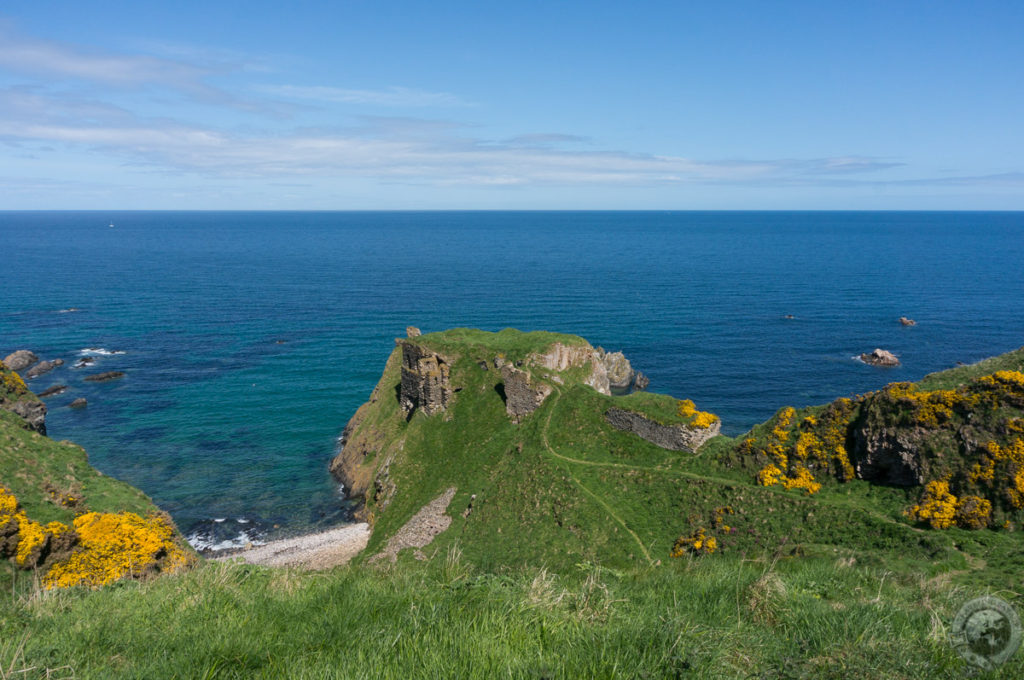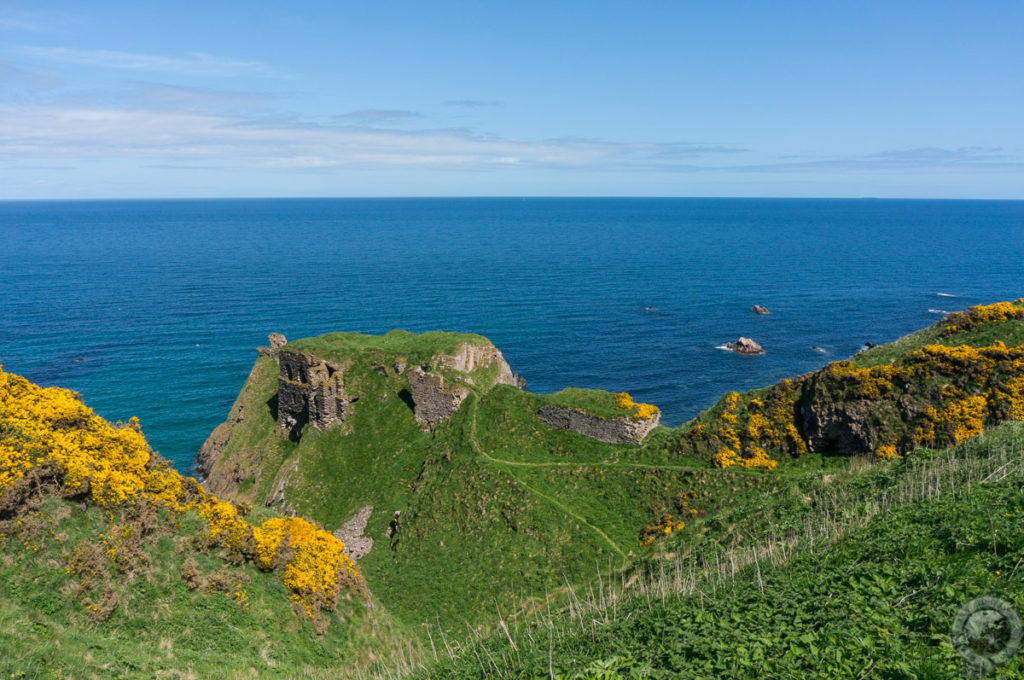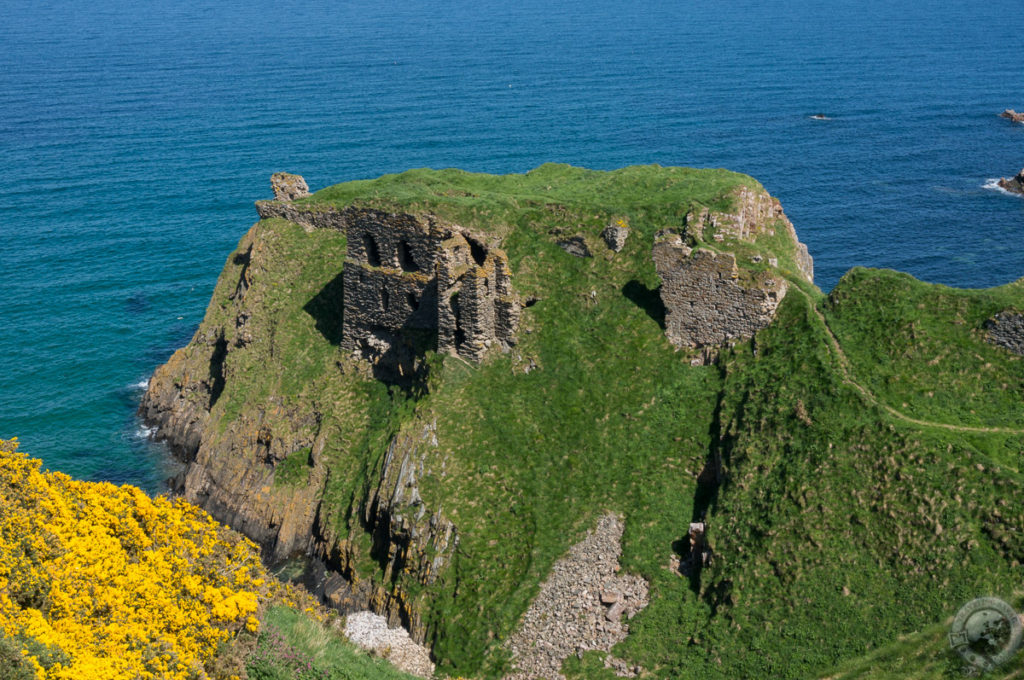The Moray Coast tracks the sea from Inverness all the way east to Fraserburgh in the reckoning of many, though by Banff I’d suggest we’re firmly hugging the North Sea. This stretch of land, whatever you call it, seems to rarely form the centerpiece of a trip to Scotland. It’s a place on the edge of things, north of Speyside and the Cairngorms National Park, east of the romantic west highlands, and south of the northern isles.
It’s a shame — I feel like I say this about every corner of Scotland — because the Moray Coast is a bracelet of land studded with gems. From Findhorn to Burghead and Pennan to Bow Fiddle Rock, you could easily spend many days rambling along the coast’s sudden cliffs. There’s another little jewel I found along the way, completely by chance, called Findlater Castle.
Needless to say, I didn’t heed the castle’s etymological advice.
Instead, I followed a narrow, rocky road from the A98 between Cullen and Sandend and drove toward the coast until I reached a series of farm buildings and the end of the line for my road-weary vehicle. I didn’t see much in the way of signs from here, but I noticed a path trailing toward the sea between emerald farm fields and let my intuition guide me.
I passed maybe a couple of other people as I walked toward the coast, no castle in sight. I figured even if this wasn’t the right way I’d at least have a brisk walk on a beautiful day. As the path came to a sharp descent it stopped and bent east and west, and before me, hidden beneath the lip of land upon which I stood, lay the remains of Findlater Castle.
From my vantage the castle appeared to have been hewn out of a knob of rock rising from the sea. What a beauty! Findlater Castle instantly ensnared me and I now consider it one of Scotland’s most beautiful ruins.
The name Findlater comes from Scottish Gaelic fionn (white) leitir (steep slope), which I consider unusual considering the many Norse-origin words in the region, because the cliffs here are ripe with quartz. The castle’s first appearance in written history happens in 1246 where it is mentioned in the Exchequer Rolls, and it appears to have been repaired in the 1260s by King Alexander III in anticipation of a Norse invasion by King Haakon IV of Norway. While the Vikings were later defeated, they appear to have captured and occupied Findlater Castle for some time.
In the 16th Century the castle was in the hands of Sir John Gordon, son of the Earl of Huntly. The Gordons rebelled against Mary, Queen of Scots, and her forces besieged Findlater Castle. Mary ultimately defeated the Gordons and executed the traitorous Sir John.
The history of Findlater Castle is interesting and deep, quite unlike the visitor experience, however. I’m all for getting my hands dirty and exploring ruins, but attempting to access and explore Findlater Castle is a fool’s gambit. Please do not climb down the steep, unstable slope to the castle. Things could end very badly if fail to heed this advice. And by ‘things’ I mean life. Your life.
All that said Findlater Castle is a largely undiscovered visual treasure on the Moray Coast. Here in the castle’s crumbling stones is the romance of Scottish history, and it’s well worth the ramble along the Moray and Banff and Buchan coastline.



